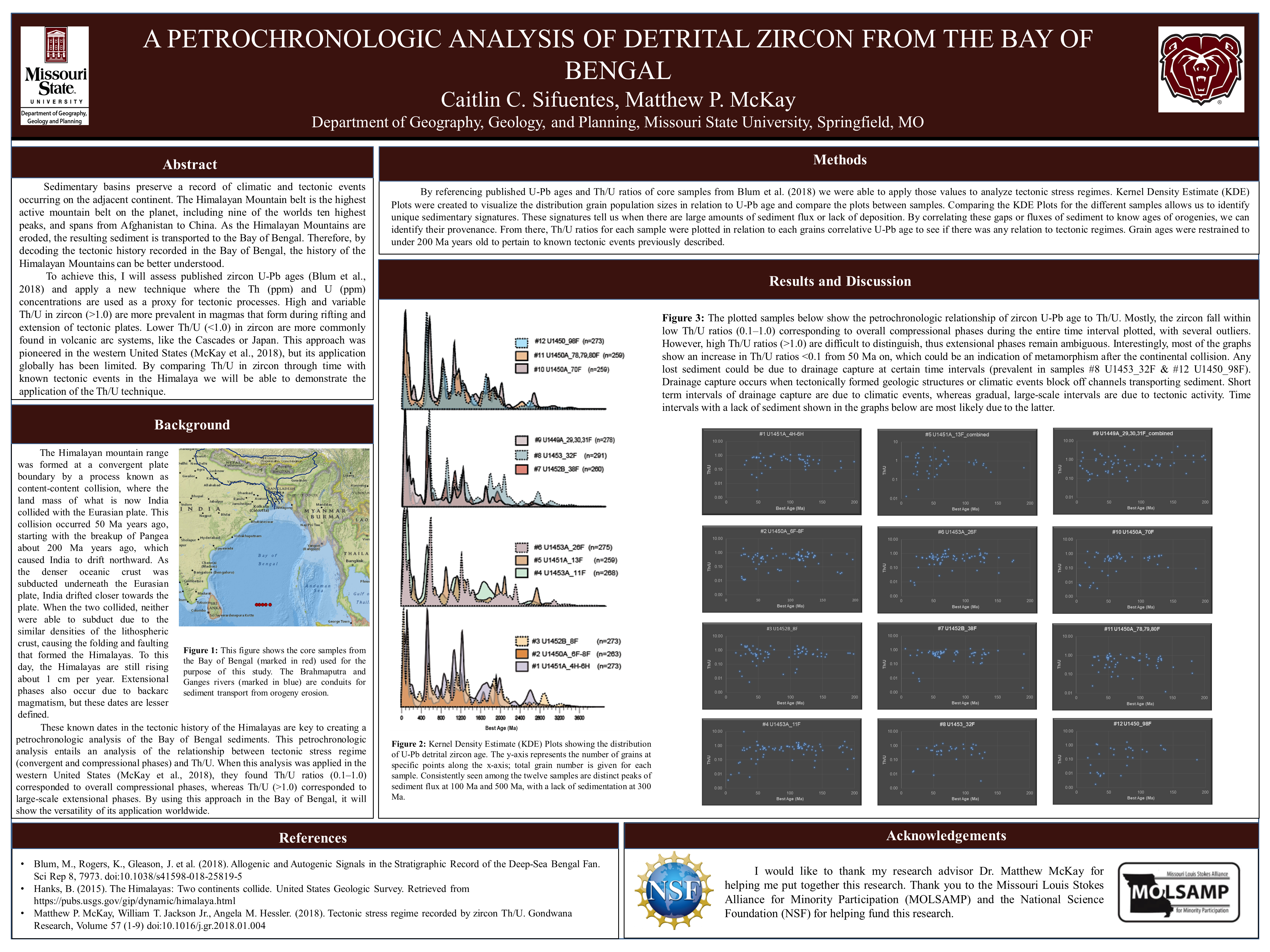Caitlin Sifuentes
A Petrochronologic Analysis of Detrital Zircons from the Bay of Bengal
Sedimentary basins preserve a record of climatic and tectonic events occurring on the adjacent continent. The Himalayan Mountain belt is the highest active mountain belt on the planet, including nine of the worlds ten highest peaks, and spans from Afghanistan to China. As the Himalayan Mountains are eroded, the resulting sediment is transported to the Bay of Bengal. Therefore, by decoding the tectonic history recorded in the Bay of Bengal, the history of the Himalayan Mountains can be better understood.
To achieve this, I will assess published zircon U-Pb ages (Blum et al., 2018) and apply a new technique where the Th (ppm) and U (ppm) concentrations are used as a proxy for tectonic processes. High and variable Th/U in zircon (>1.0) are more prevalent in magmas that form during rifting and extension of tectonic plates. Lower Th/U (<1.0) in zircon are more commonly found in volcanic arc systems, like the Cascades or Japan. This approach was pioneered in the western United States (McKay et al., 2018), but its application globally has been limited. By comparing Th/U in zircon through time with known tectonic events in the Himalaya we will be able to demonstrate the application of the Th/U technique.
